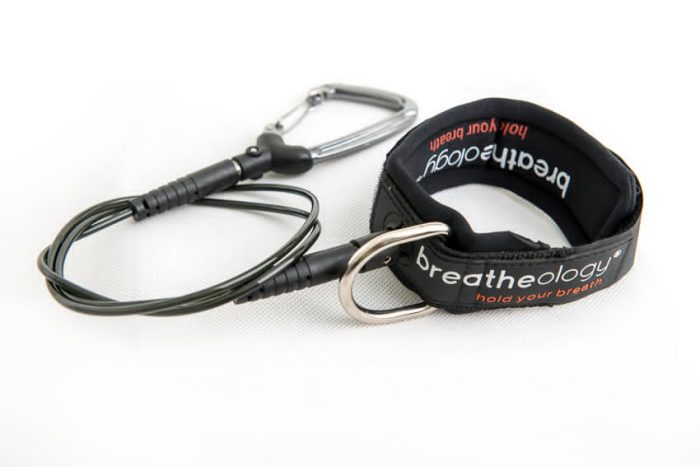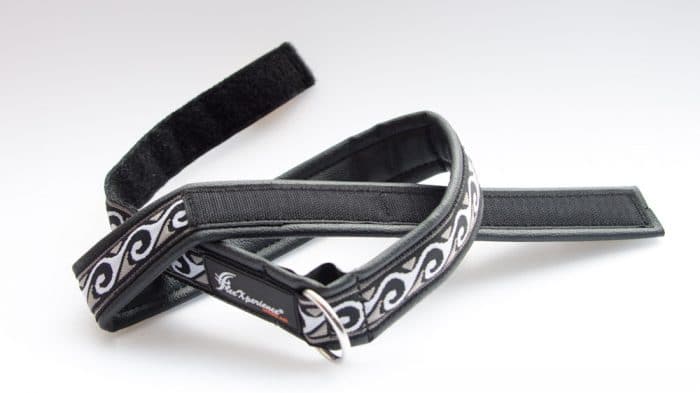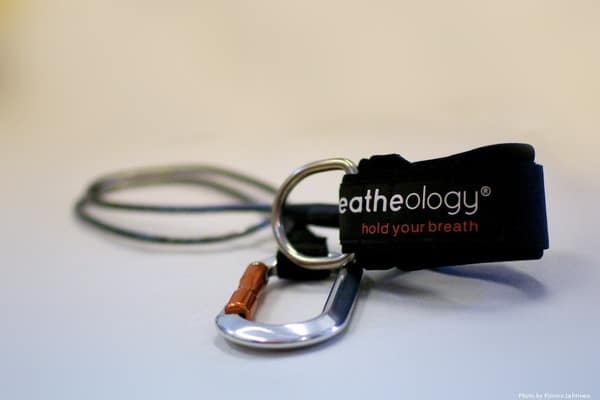In the very beginning stages of learning how to freedive, you may be more focused on getting certified, finding a freediving partner, and gathering together equipment rather than thinking about how to dive safely. Freediving equipment can be expensive, and it is tempting to just grab some fins, a mask, and go right out to train when you get the chance. Safety-wise though, there is a specific piece of equipment that should be one of the first things you buy (or rent) for yourself if you plan on training depth, especially if your dive site has some current or low visibility. This often overlooked piece of equipment is a freediving lanyard.
Why do you need a freediving lanyard?

Line orientation
If you are diving with a nose clip, lose your mask, or accidentally fill your mask with water, it can be distressing searching for the line through squinted eyes or be feeling around blindly. Fortunately, if you are wearing a lanyard, you can just grab it and feel your way to the rope. Whether you are wearing the lanyard on your wrist, waist, or ankle, it is always within reach and can guide you back to the diving line, whatever the emergency.
Current
If there is current at your dive site, the lanyard will keep you from drifting too far away from the line. If at any point, there is an emergency and you cannot make it all the way back up doing no-fins or constant weight, you can always pull on your lanyard until you reach the line and come up free immersion, or tug on the rope to alert your safety diver. Some people also utilize the lanyard during free fall when there is current by grabbing onto and holding the carabiner on the way down.
Blackouts
Blacking out at any depth is something that we have to prepare for, and depending on the depth someone is attempting, it may be a while before you realize that something is wrong. If a blackout does happen and the diver is at depth for some time, as long as they are wearing a lanyard, you can feel secure in the knowledge that he or she will stay in the same place or drift down, rather than somewhere into the current or far away from the line. That way, when you are able to reach them, you can avoid having to search for them in the surrounding area.
Pulling up a blacked out diver
Your freediving partner may dive deeper than you, and if that is the case and they black out, what can you do? It is also possible that you are unable to equalize as you descend to safety/rescue someone, and have to return to the surface. If they are wearing a lanyard and you are the safety diver, you can shake the line to signal to the surface safety to jump on the buoy and start pulling up the line (or if you are the only safety, ascend and start pulling up the line). Since the diver is latched on to the line, they will come up with the bottom weight. By the time they get up to the surface or within manageable distance for a rescue, you can retrieve them from there and begin rescue procedures.

Safety as a priority
If you are on a budget, it can be difficult to reason with yourself as to whether or not you should buy a piece of equipment, especially in depth. In my experience, I have seen many people just use a mask and someone else’s line to train free immersion or no-fins when they have a limited budget. Unfortunately, these divers are putting their safety and the safety of their dive buddies at risk when they are not using a lanyard. Whether you are a complete beginner or a competitive freediver, do not let freediving lanyards escape your attention as you collect or rent freediving equipment, and use them every time you train.

